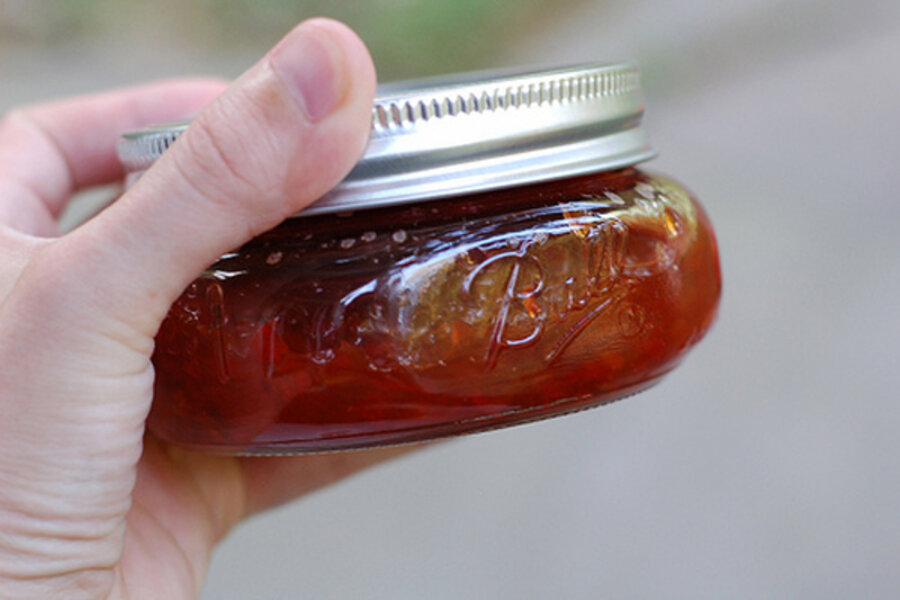Red pepper jam
Loading...
I was introduced to this delicious substance by my husband's Aunt Maggie who gave us a half-pint jar she'd made from her own small stash during our Thanksgiving canned goods swap last fall. It collided with a log of fresh goat cheese and some herb-covered crackers and lasted all of half an hour.
This stuff is seriously delicious. It's amazingly tasty with cream cheese and lox on a bagel, as a spread on a salami sandwich, with goat cheese and crackers, or lots of other ways.
The good news is that it is not very hard to make (whether or not you end up canning it). But you really need to make it now before sweet pepper season ends. You do not have to use red peppers though the color of the jam will be prettier if you do. So go buy a boatload of sweet peppers (or harvest your own if you've got 'em). Then get jamming.
The steps are pretty simple – you blend or cuisinart (yes, I use that as a verb) the peppers, then salt and let drain for a few hours.
Then add sugar and vinegar and simmer down to a thick, jammy consistency.
Then can it (or if you prefer to make a really small batch, just store it in an airtight container once it's cooled down). But I suggest you make enough to can at least a few jars – once you've tasted this stuff, you're going to want them. They also make great gifts.
Red Pepper Jam
Makes roughly 2 pints (or 4 half-pints)
Ingredients
12-15 large, sweet red peppers, rinsed and with the stems, ribs and seeds removed
2 cups apple cider or white vinegar (I used apple cider)
3 cups sugar
2 tablespoons salt
Directions
1. Chop or blend the peppers in a Cuisinart or blender. Remove to a bowl, sprinkle the chopped peppers with the salt and let stand for three to four hours then drain.
2. Place the peppers in a pot, add the sugar and vinegar and simmer gently until thick and jammy, about 40 minutes to one hour.
3. If you plan to can any of this delicious stuff, use this time while the jam is simmering to sterilize your canning jars and lids and get your canner pot ready to go. If you don't want to preserve any, just kick back.
4. Once the jam has reached the desired consistency (it should thicken a little when it cools, mind you), if you're canning, ladle the jam into the sterilized jars, wipe the rims clean of any drips, apply the sterilized lids and bands and process in a boiling water bath for 15 minutes. Let cool in a draft-free place then test the seals. If good, you can store for up to a year. Any that have not sealed properly should go into the fridge and get used within a week or two. If you're not canning it, let it cool a bit, then pour it into an airtight container and store in the fridge for up to two weeks.
Not feeling totally confident about canning yet? Check out my page of canning directions and resources with links to my favorite recipes, cookbooks and canning and preserving web sites.








